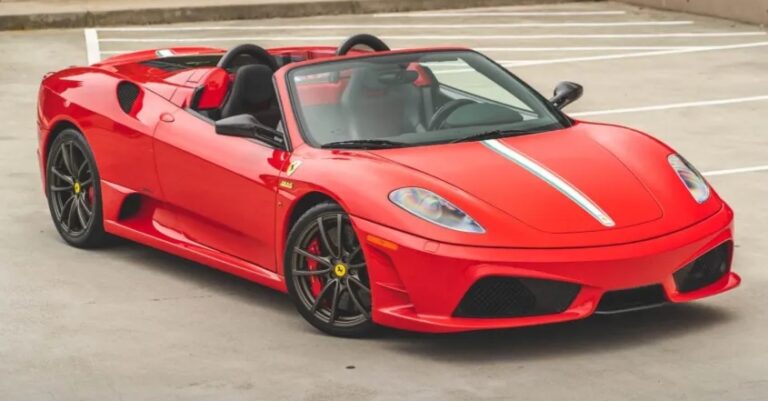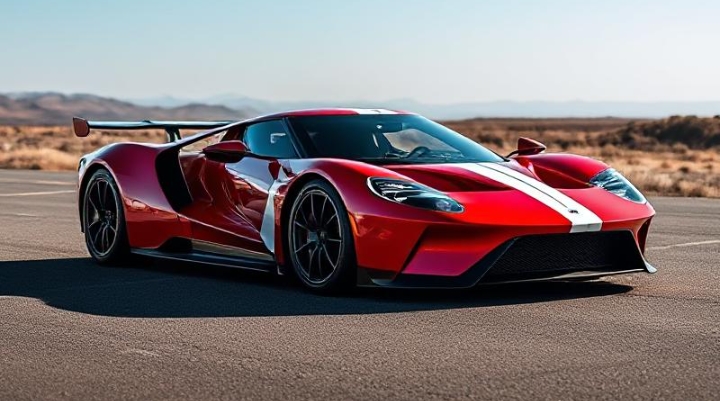Evolution Of The Nissan Cube
Of all the shapes in the automotive world, the cube is perhaps the most honest and the most challenging. It is a shape of pure utility, a promise of maximized interior volume within a minimal footprint. Yet, it is also a shape that defies the sleek, wind-cheating profiles that dominate modern car design. To embrace the cube is to reject convention. And for three generations, no automaker embraced this philosophy with more quirky charm and innovative thinking than Nissan with its aptly named Cube. This is the story of its evolution, from a Japan-only utility box to a global icon of asymmetrical design.
First Generation (Z10): The Sensible Box (1998-2002)
The Nissan Cube story begins not with a radical design statement, but with a profoundly practical solution. In the late 1990s, Japan’s bustling urban environments demanded small, efficient, and spacious vehicles. Built on the same respected platform as the Nissan March (known as the Micra in other markets), the first-generation Cube (chassis code Z10) was introduced in February 1998.
Visually, the Z10 was a straightforward, two-box design. It was tall, narrow, and its lines were clean and unpretentious. There was no hint of the asymmetrical quirkiness that would later define the nameplate. Its mission was simple: to be an incredibly useful small car. The interior was surprisingly cavernous, thanks to its high roofline and upright seating position, making it feel more like a mini-MPV than a supermini. The rear bench seat could slide fore and aft, allowing owners to choose between generous rear legroom or expanded cargo capacity—a clever feature for a car of its class.
Power came from a single engine choice: a 1.3-liter CG13DE inline-four, producing a modest but adequate 81 horsepower. This was paired with either a four-speed automatic transmission or Nissan’s innovative N-CVT (Continuously Variable Transmission), which provided smooth, efficient power delivery perfect for city driving. All Z10 models were front-wheel drive.
The trim levels in Japan reflected its utilitarian focus, gradually adding comfort and convenience features.
- F: The base model, offering the essentials.
- S: A step up, typically adding features like color-matched bumpers and full wheel covers.
- X: The top-tier trim, which included niceties like power windows, better upholstery, and often a more sophisticated audio system.
- Rider: A special version tuned by Nissan’s subsidiary, Autech. The Rider added a sporty and distinctive flair with a custom chrome grille, unique bumpers, and upgraded interior appointments, hinting at the Cube’s future potential for personalization.
The Z10 was a quiet success in its home market. It established the Cube name as synonymous with intelligent space utilization and urban practicality. It was a well-engineered tool, but it wasn’t yet a fashion statement. For that, the world would have to wait for its successor.
.

.
Second Generation (Z11): Finding the Asymmetrical Soul (2002-2008)
If the Z10 was the sensible blueprint, the second-generation Z11, launched in October 2002, was the vibrant, personality-filled masterpiece. This was the car that transformed the Cube from a mere utility vehicle into a cultural phenomenon. Nissan’s designers, led by Hirotada Kuwahara, were tasked with creating a car that felt like a cozy, personal room—a “den on wheels.”
The result was a design that was both shocking and brilliant. The Z11 famously introduced the Cube’s signature asymmetrical rear. On the passenger side (left side in Japan), the C-pillar was virtually invisible, replaced by a sweeping, wrap-around glass panel that extended from the side window around the back. The driver’s side, however, featured a thick, conventional C-pillar for structural rigidity. This created a stunningly unbalanced look that provided the driver with a clear view over their right shoulder while giving the car an unforgettable profile. The rear door was also unconventional, hinged on the side like a refrigerator, opening away from the curb for easy loading in tight city streets.
The interior was just as imaginative. The headliner featured a “Jacuzzi” design, with concentric ripples emanating from the central dome light, creating a calming, lounge-like atmosphere. The seats were designed to feel like a comfortable sofa, and elements like the speaker grilles were styled to resemble Japanese shōji paper screens.
A significant addition to the lineup was the Cube³ (Cube Cubic), a long-wheelbase version with a third row of small seats, allowing for seven passengers in a pinch. This further enhanced the model’s reputation for practicality.
Under the hood, the Z11 was powered by a new 1.4-liter CR14DE engine. In 2005, this was updated to a 1.5-liter HR15DE engine for better performance and efficiency. While the CVT remained the primary transmission, a conventional automatic was also available. A particularly innovative feature was Nissan’s e-4WD system. Rather than a complex and heavy mechanical 4WD system, e-4WD used a small electric motor to power the rear wheels at low speeds, providing extra traction for pulling away on slippery surfaces like snow or gravel without a significant fuel economy penalty.
The Z11’s trim levels became more expressive and lifestyle-oriented:
- 14S / 15M: These were the standard, well-equipped models that formed the core of the lineup.
- 14G / 15G: Higher-spec versions with features like intelligent keyless entry, automatic air conditioning, and premium interior finishes.
- EX / SX: Luxury-focused trims offering the highest level of equipment.
- Agiactive: A sportier trim with unique styling cues and interior accents.
- Rider (Autech): The Rider returned with an even more pronounced custom look, featuring a large, polished billet grille that became a sought-after look in JDM culture.
- Trabis: Another Autech version with a more classic, retro-inspired design.
The Z11 was a runaway hit in Japan and became a cult favorite in gray import markets around the world. It had found its identity: a car that celebrated being different and put comfort, personality, and thoughtful design above all else.
Third Generation (Z12): The Global Bulldog (2008-2019)
After the phenomenal success of the Z11, Nissan made the bold decision to take the Cube global. The third-generation Z12, launched in Japan in late 2008 and arriving in North America and Europe for the 2009 model year, was tasked with translating the Cube’s unique Japanese charm for a worldwide audience.
The design was an evolution, softening the Z11’s hard edges into more rounded, organic curves. Nissan’s designers described the new look as a “bulldog in sunglasses”—sturdy, endearing, and undeniably cool. The iconic asymmetrical rear window remained, but it was cleverly adapted for international markets. For both right-hand-drive and left-hand-drive versions, the wrap-around glass was always on the passenger side and the thick pillar on the driver’s side, ensuring the design’s visual and practical benefits were preserved globally. The refrigerator-style rear door was also engineered to always open away from the curb, regardless of the market.
The “lounge” interior concept was pushed even further. The “Jacuzzi” headliner was refined into a more subtle water-ripple effect, a motif that was repeated in the speaker grilles and even the cup holders. The dashboard had a flowing, wave-like design, and the entire cabin was designed to be a comfortable, social space.
For its North American debut, the Z12 was equipped with a larger, more powerful 1.8-liter four-cylinder engine (shared with the Versa), producing 122 horsepower. This was a crucial upgrade to handle American highway speeds. Buyers could choose between a smooth Xtronic CVT or, surprisingly, a six-speed manual transmission on lower trims, a nod to driving enthusiasts.
Customization was a cornerstone of the Z12’s marketing. Nissan offered a vast catalog of accessories, allowing owners to personalize their Cube. The most famous of these was a circular piece of shag carpet that could be placed on the dashboard—a whimsical touch that perfectly captured the car’s playful spirit. Other options included interior accent lighting with 20 different color choices, custom wheels, and various body kit pieces.
In North America, the trim structure was clear and straightforward:
- 1.8 Base: The entry-level model, sparsely equipped and available exclusively with the six-speed manual transmission. It featured 15-inch steel wheels and basic amenities.
- 1.8 S: The volume seller. It added features like cruise control, upgraded audio, premium cloth seats, and body-colored mirrors. The CVT became available as an option on this trim.
- 1.8 SL: The top-of-the-line model. It came standard with the CVT and added 16-inch alloy wheels, automatic climate control, push-button ignition with Nissan’s Intelligent Key, and an upgraded Rockford Fosgate sound system as part of a premium package.
- 1.8 Krōm Edition (2009-2012): Pronounced “chrome,” this was a special factory-customized model. It featured a unique chrome grille, aggressive front and rear fascias, a body-colored rear roof spoiler, and exclusive 16-inch alloy wheels. The interior had unique black and gray upholstery and aluminum-trimmed pedals.
The End of an Era and a Lasting Legacy
Despite a strong initial reception from the press and design-conscious buyers, the Cube’s sales in North America and Europe began to wane. Its unconventional styling, while celebrated by a loyal few, was a barrier for the mainstream market, which was rapidly shifting towards more conventional compact crossovers. Faced with declining sales and the high cost of updating the platform to meet new safety and emissions standards, Nissan discontinued the Cube in North America and Europe after the 2014 model year. It soldiered on in its home market of Japan until 2019, marking the end of its 21-year production run.
The Nissan Cube was never a car for everyone, and that was precisely its strength. It was a vehicle born from a different set of priorities—one that valued interior space over aerodynamics, personality over conformity, and comfort over raw performance. Across three distinct generations, it evolved from a simple box into a sophisticated design statement, proving that practicality and personality could coexist beautifully. Today, the Cube is a beloved cult classic, a rolling testament to a time when a major automaker dared to be defiantly, wonderfully weird.







